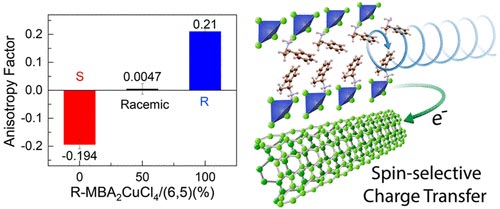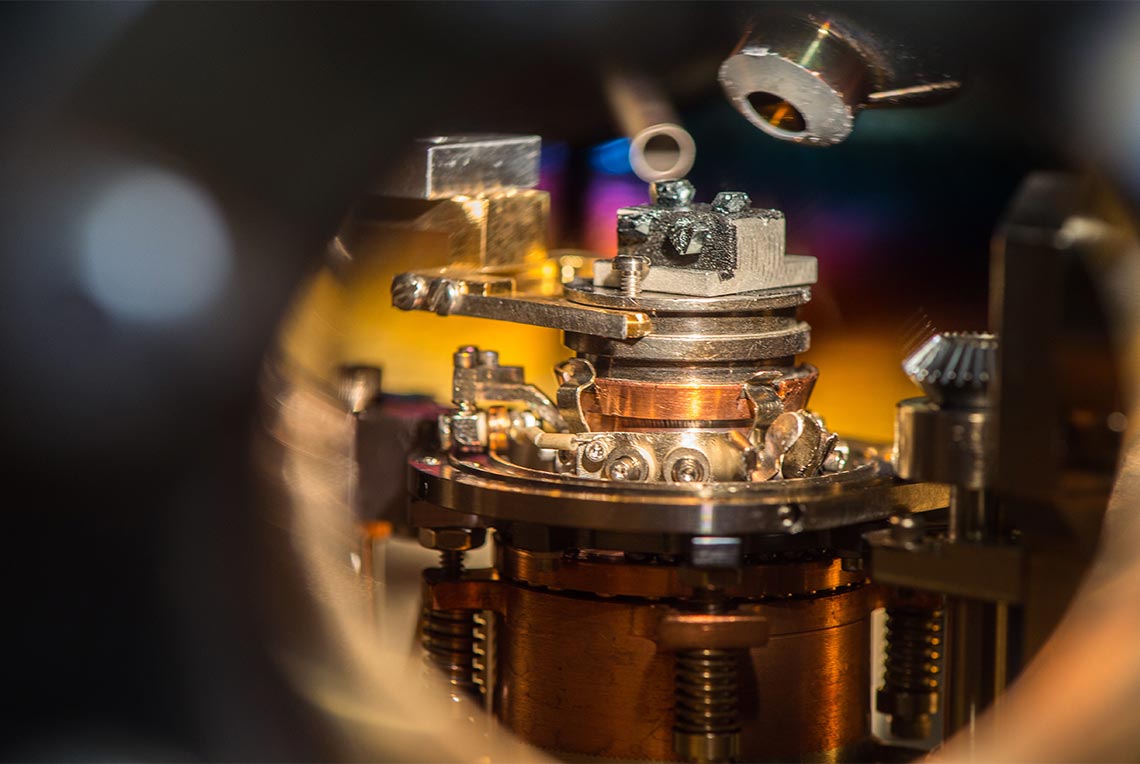Direct Detection of Circularly Polarized Light Using Chiral Copper Chloride—Carbon Nanotube Heterostructures
April 6, 2021
The chiral heterostructure shows high sensitivity for photon detection and one of the best abilities demonstrated to date to discriminate between right- and left-handed circularly polarized photons.
Scientific Achievement
Chiral ligands impart strong chirality and circular dichroism into copper chloride (CuCl2)-based, zero-dimensional semiconductors. Heterojunctions of the insulating semiconductors with conductive carbon nanotubes (CNTs) enable efficient circularly polarized light detectors.
Significance and Impact
Our study demonstrates new strategies for, and fundamental mechanistic understanding of, spin-selective photoinduced charge transfer across tailored interfaces with semiconductors.
Research Details
- Used chiral ligands to synthesize chiral metal halide semiconductor with largest reported circular dichroism.
- Constructed a nano-heterojunction from perovskite nanocrystals decorated onto CNT arrays.
- Heterojunction discriminates between right- or left-handed circularly polarized light with high sensitivity and anisotropy factor.
Related People
Matthew Beard
National Renewable Energy Laboratory
Jeffrey Blackburn
National Renewable Energy Laboratory

We demonstrate that photoinduced charge transfer between a chiral metal halide semiconductor and CNT acceptor is selective to the spin of the transferred charge. Detectors made with such heterojunctions could be used for applications such as quantum information processing.









